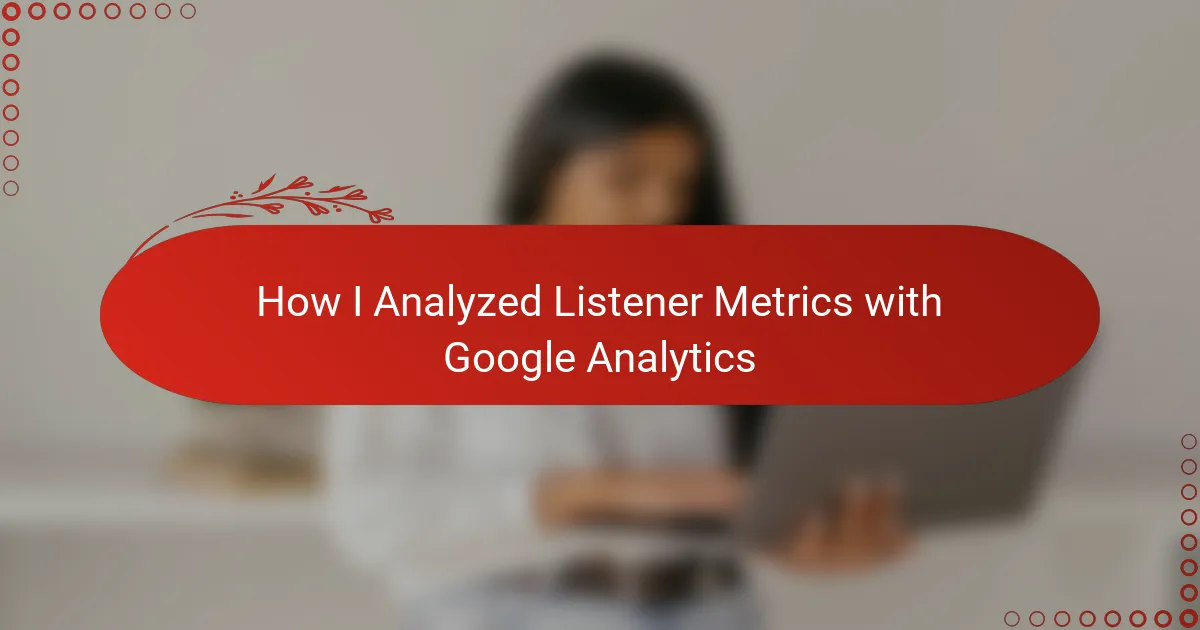Key takeaways
- Understanding listener metrics is essential for tailoring radio content to engage audiences effectively, revealing patterns in their behavior and preferences.
- Google Analytics can transform assumptions into actionable insights, providing crucial data about listener interactions with broadcasts.
- Key metrics such as average listening time, peak hours, and drop-off points can significantly influence programming decisions and enhance listener relationships.
- Analyzing data with a focus on storytelling helps broadcasters make informed changes, turning statistical insights into meaningful audience engagement.
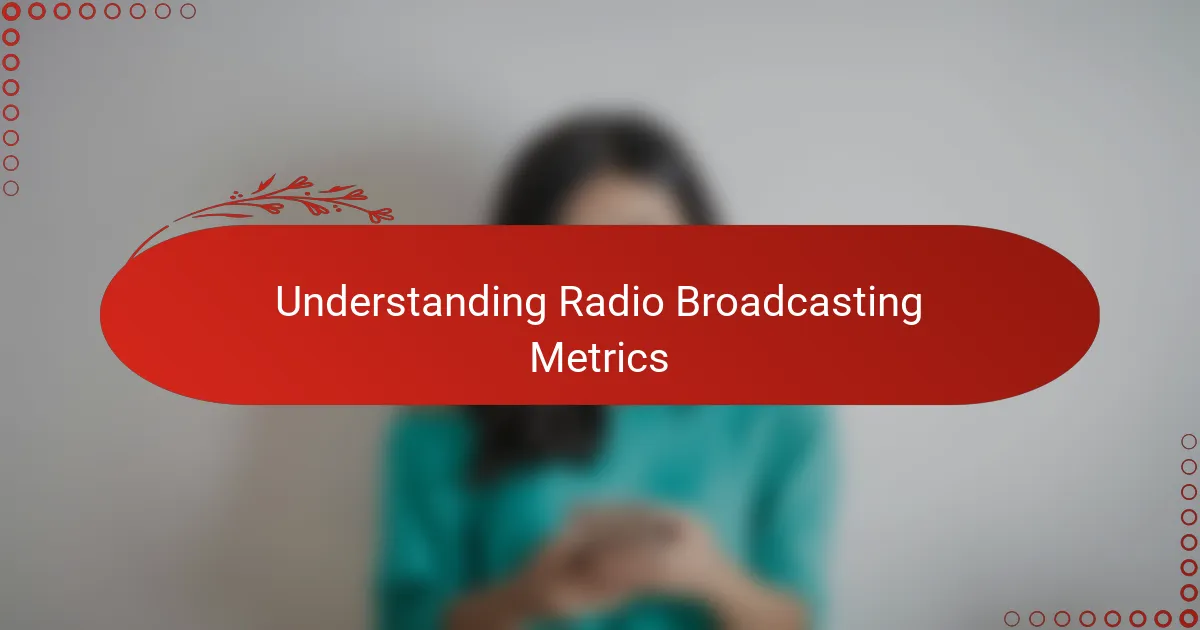
Understanding Radio Broadcasting Metrics
When I first started in radio broadcasting, I quickly realized that understanding listener metrics isn’t just about numbers—it’s about grasping what those numbers say about your audience’s habits and emotions. Listener metrics like average listening time, peak hours, and drop-off points reveal patterns that feel like a secret language between the broadcaster and the audience. Have you ever wondered why people tune in during certain hours and disappear at others? These insights give us the power to tailor content that truly connects.
From my experience, interpreting these metrics has felt like piecing together a puzzle. For example, noticing a sudden dip in listener engagement during a particular segment challenged me to rethink the programming strategy. It underscored how every metric tells a story, pushing me to ask: What’s happening behind this number? Understanding these subtle shifts helped me foster a deeper relationship with my audience.
Metrics in radio broadcasting can sometimes feel abstract, but they’re fundamentally about human behavior. When I approach them this way, they become less intimidating and more of a tool to craft an experience listeners cherish. It’s like having a conversation where the numbers speak for your audience—if only we know how to listen.
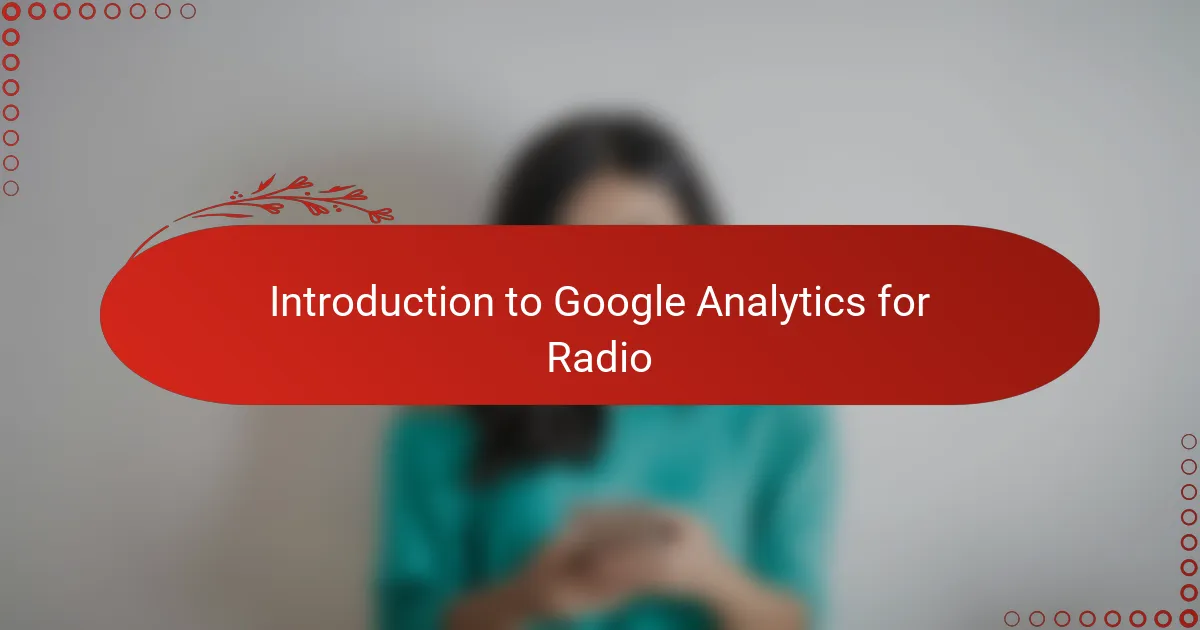
Introduction to Google Analytics for Radio
Google Analytics might sound like a tool meant solely for websites, but when I started using it for radio, it opened up a whole new world of understanding my listeners. Have you ever wished you could peek into when and how your audience tunes in digitally? This tool gave me exactly that window.
At first, navigating Google Analytics felt overwhelming—so many menus, graphs, and numbers. Yet, as I connected these data points to real audience behaviors, it became clear: this wasn’t just data, it was insight waiting to happen. Tracking listener activity online helped me spot trends I hadn’t noticed before, making the broadcast feel much more personal.
What struck me most was how Google Analytics transformed assumptions into evidence. Instead of guessing why listeners might drop off or stay engaged, I could see their actual interactions with streaming and website content. This shift changed not only my programming decisions but also how I relate to my audience every day.
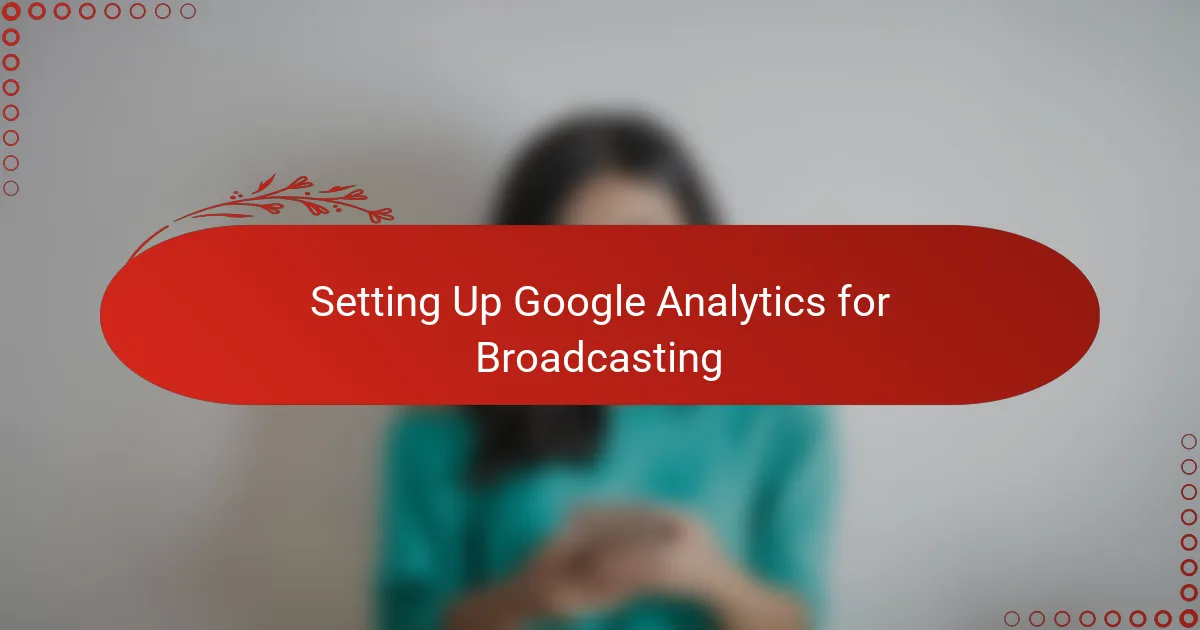
Setting Up Google Analytics for Broadcasting
Setting up Google Analytics for a radio broadcast was a bit like learning a new language for me. I remember the first step—integrating the tracking code into my streaming platform and website—felt daunting. But once I saw the metrics begin to flow, it was like a gateway opened, revealing exactly how listeners found and interacted with my content.
I found that customizing the dashboard made all the difference. Instead of getting lost in countless reports, I focused on key metrics like real-time listeners and referral sources. It made me wonder—why hadn’t I set this up sooner? Tailoring it helped me stay focused on what truly mattered: understanding when and where my audience was tuning in.
One challenge I faced was setting up event tracking to capture specific listener actions, such as clicks on podcasts or show schedules. It took some trial and error, but once it clicked, I felt empowered. Suddenly, I wasn’t just seeing numbers; I was uncovering stories about my listeners’ journeys, which informed better content decisions. Have you ever experienced that moment when data turns into something deeply meaningful? That’s exactly what happened for me.
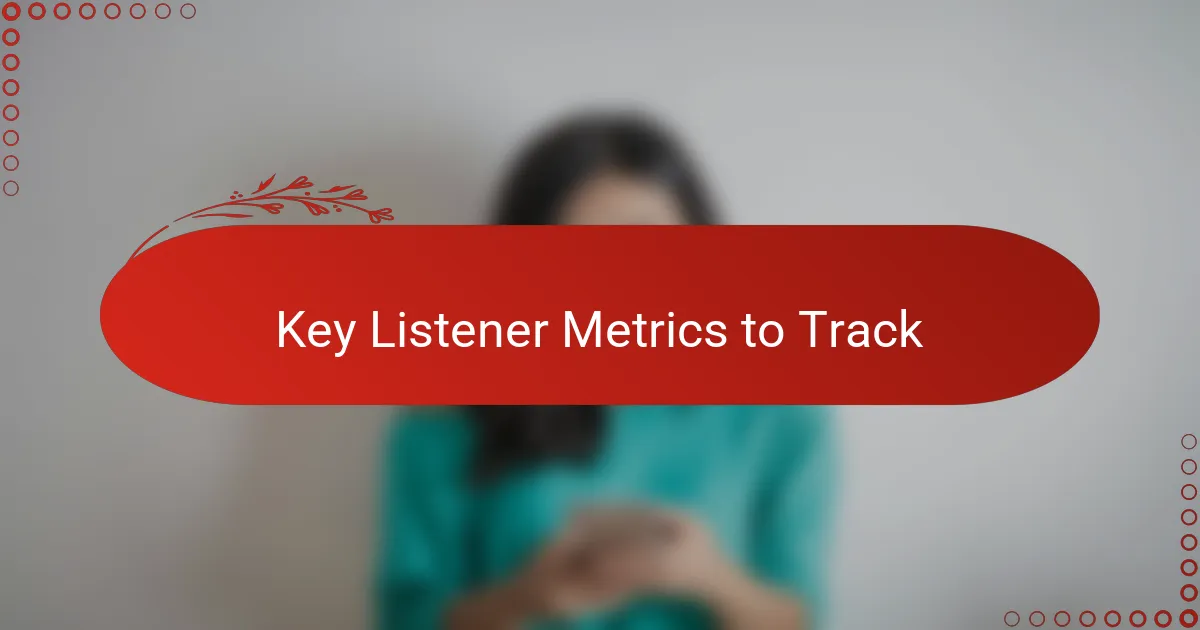
Key Listener Metrics to Track
When I first looked at listener metrics, I zeroed in on a few that felt like the heartbeat of my broadcast. Average listening time told me how long people stayed connected, revealing whether my content was holding their attention or if I needed to shake things up. It was fascinating to see that even small changes in programming could affect this number significantly.
Another metric that caught my eye was peak listening hours. Noticing when my audience was most active helped me schedule my best shows, much like setting the table for a dinner party when guests are about to arrive. Have you ever adjusted your timing and suddenly felt the energy shift in your broadcast? That’s the power of knowing your peak times.
Drop-off points were perhaps the most telling metric of all. Seeing exactly when listeners tuned out felt personal, almost like a gentle nudge to ask, “What could I do better here?” Those moments pushed me to refine segments and keep listeners hooked. Tracking these key metrics transformed the way I connected with my audience every day.
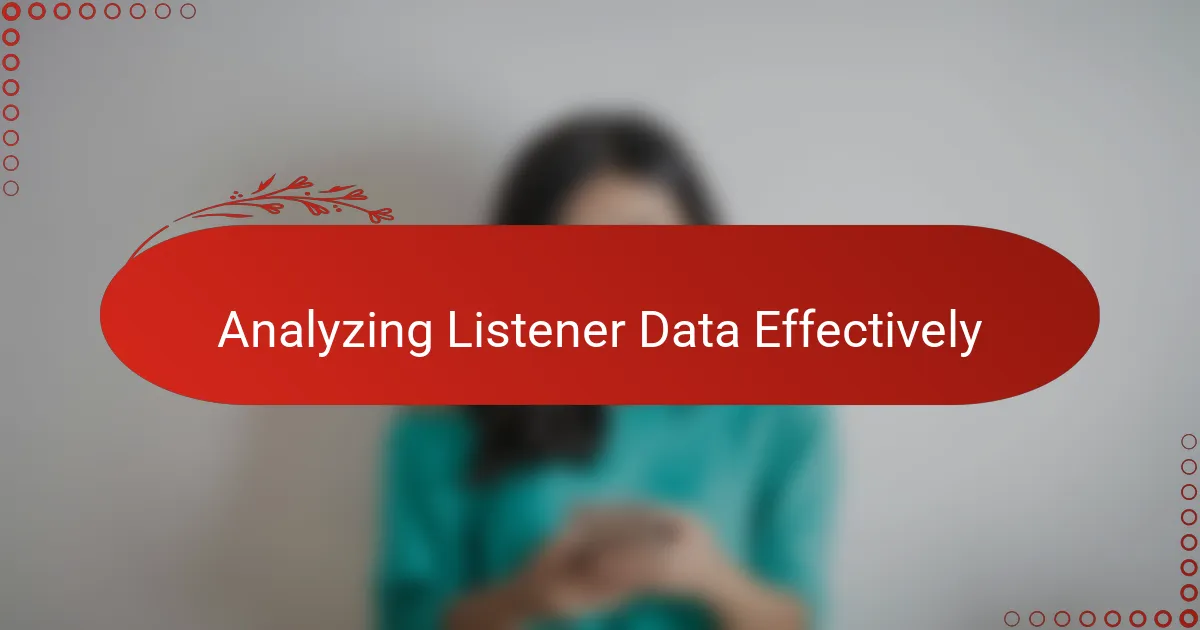
Analyzing Listener Data Effectively
Analyzing listener data effectively means more than just glancing at numbers; it requires me to dive into the story behind each metric. I’ve found that asking questions—why did listeners drop off at this exact moment, or what made this hour more popular than others—turns abstract statistics into actionable insights. It’s like being a detective, piecing together clues that guide better programming decisions.
One technique that really helped me was segmenting data by listener demographics and behavior. By breaking down who my audience is and how they interact with different shows, I could tailor content that felt personal and relevant. Have you ever tried to guess what your listeners want without this level of detail? From my experience, guessing rarely hits the mark.
The emotional connection you build from analyzing data comes from recognizing patterns that reflect real listener needs and frustration points. When I see a consistent dip during a favorite segment, it motivates me to rethink the format or introduce fresh voices. Data transforms from cold numbers into a conversation with my audience—one that leads to a much richer broadcasting experience.
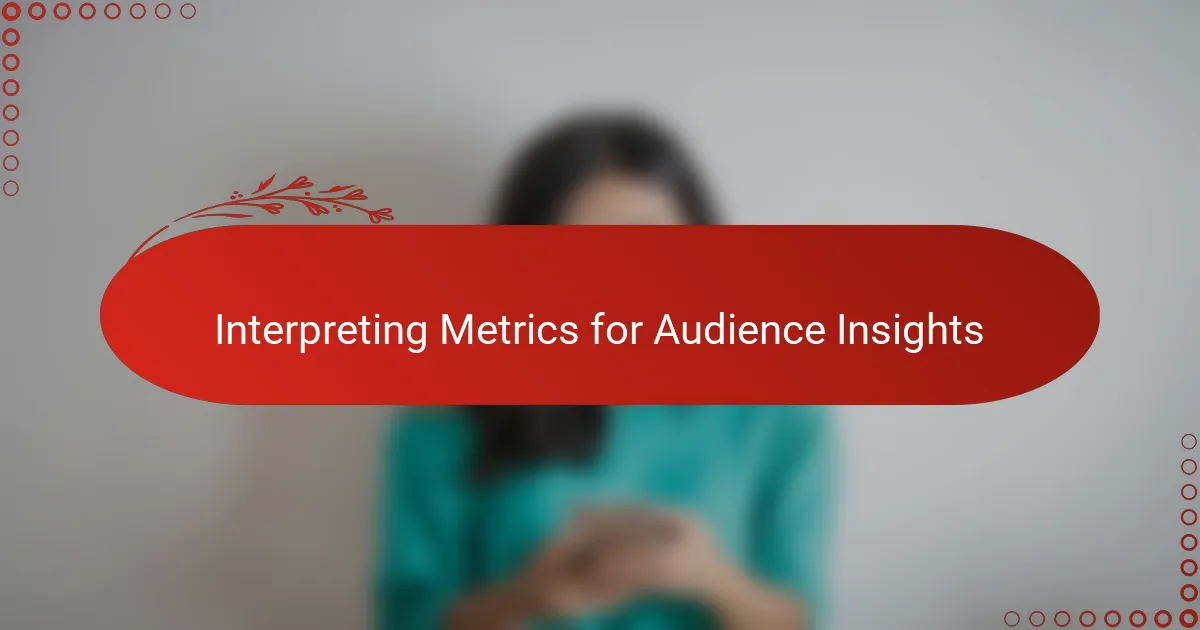
Interpreting Metrics for Audience Insights
Interpreting metrics always felt like decoding a secret message from my listeners. For example, when I noticed a steady rise in average session duration during evening hours, it wasn’t just a number—it told me my late shows were resonating emotionally. Have you ever felt that thrill when data suddenly reveals why your audience stays glued?
Sometimes the metrics challenged my assumptions. I recall being surprised by a sharp drop-off midway through a popular segment. Instead of brushing it off, I asked: What changed here? This question led me to revise the content flow, showing me how metrics aren’t just facts but invitations to improve.
What fascinates me most is how combining different data points creates a fuller picture. Cross-referencing listener location with engagement times helped me discover pockets of dedicated listeners I hadn’t targeted before. These insights turned my programming choices from guesswork into meaningful conversations with my audience.
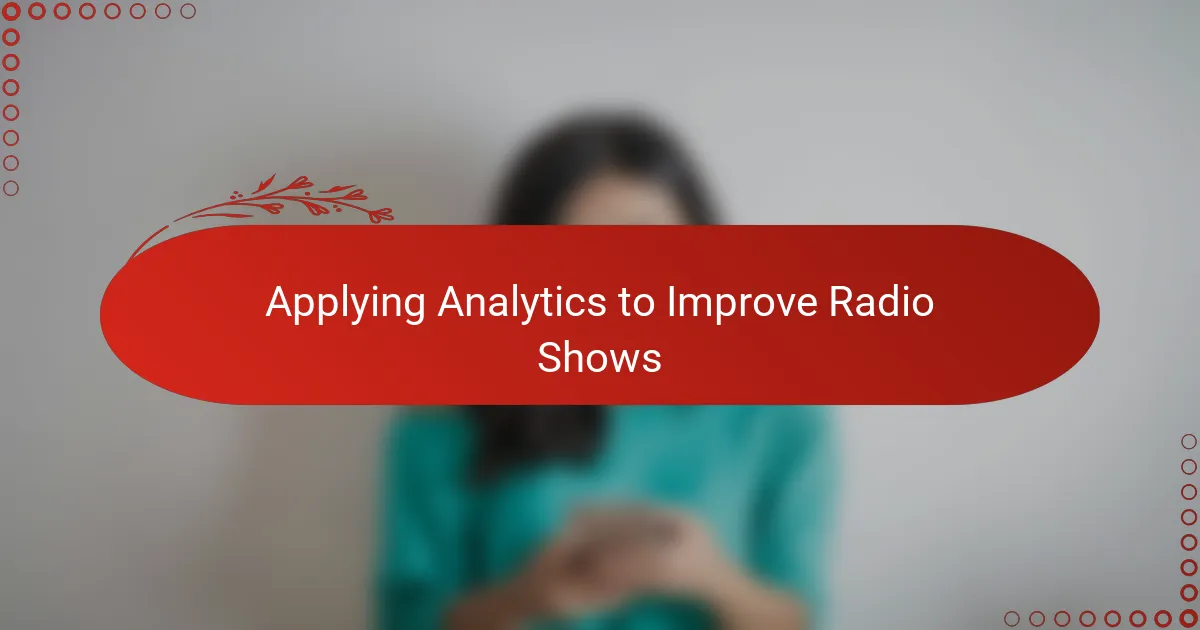
Applying Analytics to Improve Radio Shows
Applying analytics to improve radio shows felt like unlocking a new level in my broadcasting journey. I remember one episode where listener drop-off peaked just before the news segment. Instead of ignoring it, I dug into the data and realized the pacing was too slow; tweaking that segment kept more ears tuned in the following week.
It’s fascinating how even small adjustments—like shifting a popular music block to peak hours—can boost engagement significantly. Have you ever experimented with segment timing and noticed your audience respond differently? For me, those shifts turned sporadic listeners into regulars.
But what really struck me was how analytics transformed guesswork into confidence. Instead of relying on gut feeling alone, I could see patterns emerging that told me exactly what my audience wanted to hear. That clarity inspired me to refine content with purpose, making each broadcast feel like a conversation rather than a monologue.
